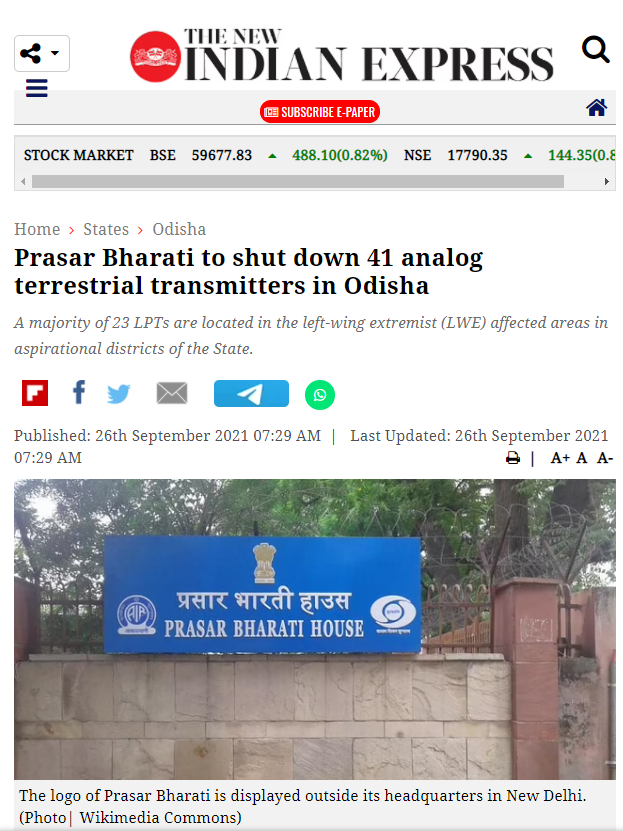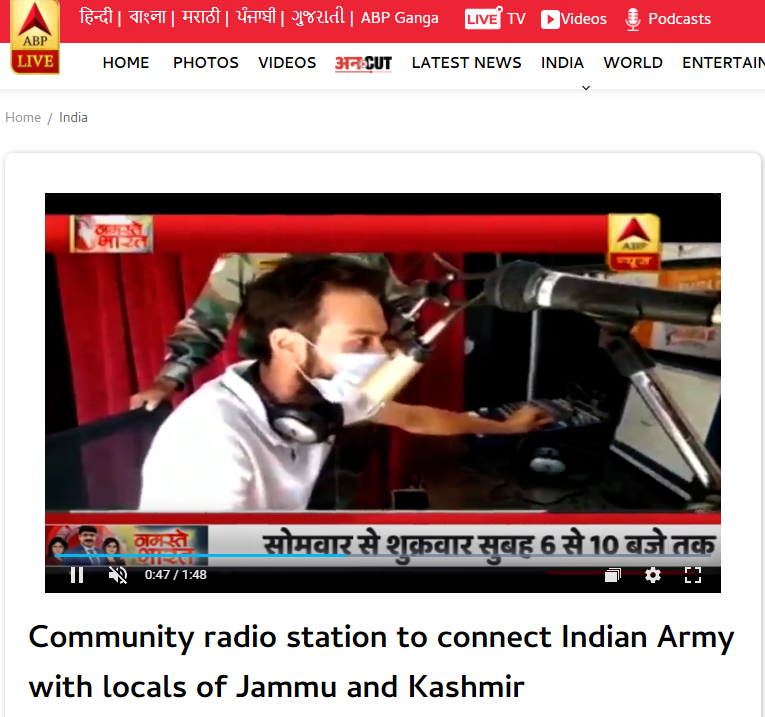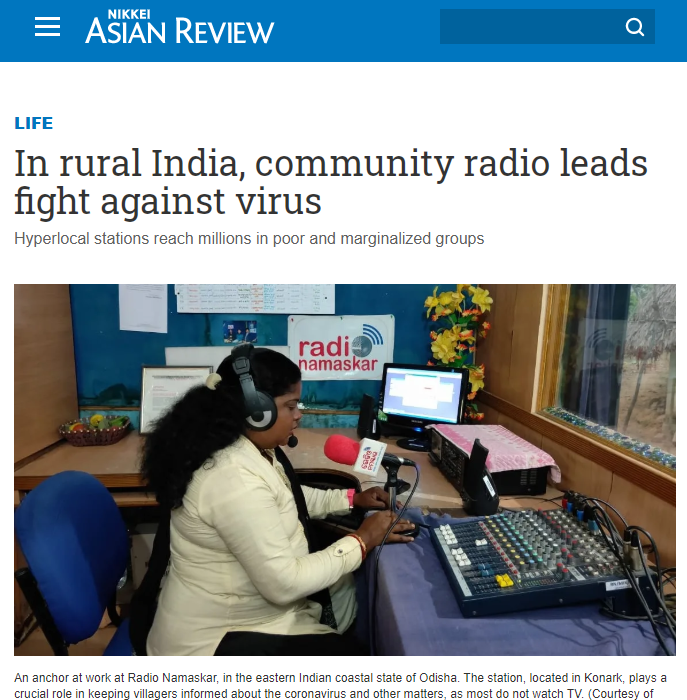
Source
India’s broadcaster Prasar Bharati has ordered the Doordarshan television division, which is also in charge of infrastructure, to switch off analogue TV transmitters by March 2022. Channels have already been switched off in large cities, and in areas where the switch-off is planned, financial aid will be provided for the switchover. However, it has been calculated that by now 98% of the population already use digital channels or DD Free Dish satellite TV. With the switch-off, Prasar Bharati will be able to auction the frequencies that become free, thus increasing the supply of digital channels. The analogue frequencies will remain on air only in strategic areas: Jammu, Kashmir, Ladakh, Sikkim; the Andaman Islands, Nicobar and Lakshadweep. The shutdown will also have an impact on employment because the staff is redundant: 50% of the technicians will be dismissed and only a fraction will be replaced by more qualified elements.



